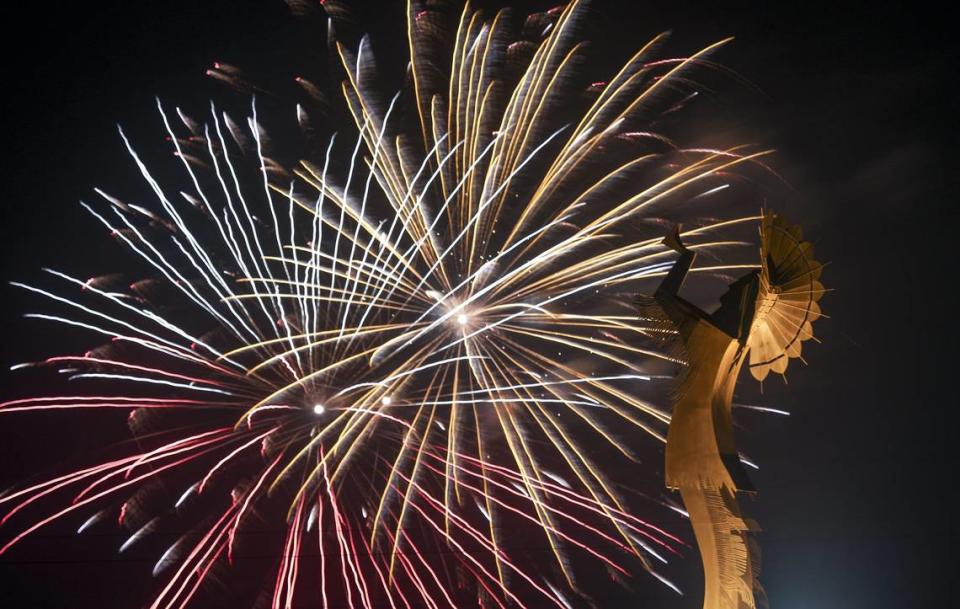50 years after its dedication, here’s what the Keeper of the Plains means to Wichita
Sandra Victors was a teenager when she had a front-row view to artist Blackbear Bosin’s creation of the Keeper of the Plains sculpture in the early 1970s.
Bosin was close with Victors’ mother, Ruby Davila, and one day came to see her at the family’s home on the north end of Fairview off 21st Street, where Victors was sitting outside. He had scrolls of drawings under his arms.
“He came flying up the steps with a cigarette hanging out of his mouth, and he said, ‘Your mama home?’
Victors took a seat on the living room couch as her mother and Bosin talked.
“Ruby, I’m having so much trouble with this statue’s arms,” Victors remembers Bosin saying. “I can’t figure out what to do with them.”
Victors said her mother took an eraser, erased the arms Bosin had drawn and then drew her own version.
“I was shocked.”
Her mother’s advice was to “make them praying hands and have them go up.”
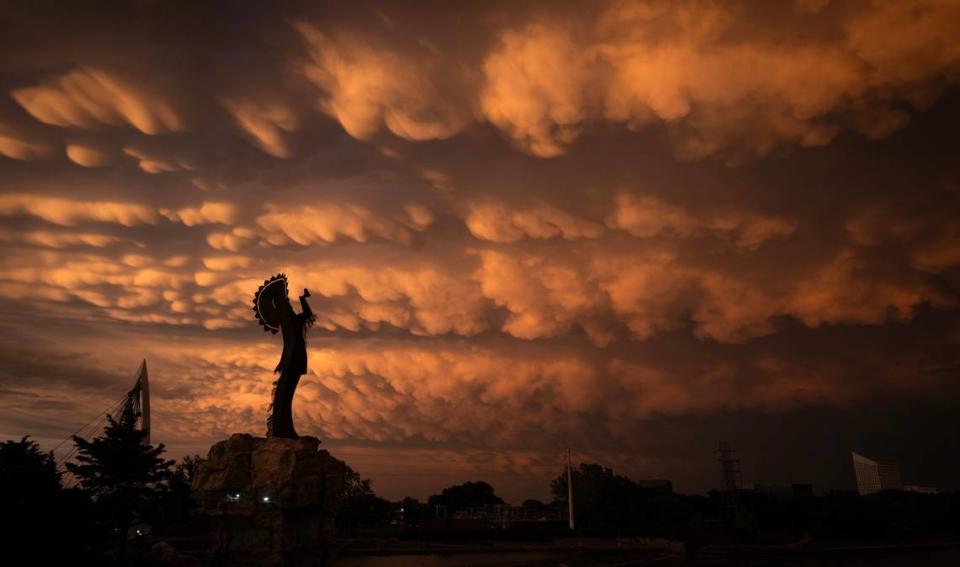
Victors explained that “we pray with our hands up when we’re praying to the Creator. Lift them up to the Creator, I should say.”
Bosin, of the Kiowa and Comanche tribes, then erased Davila’s sketch, took her idea and made it his own, Victors said.
“He rolled up his sketches, and off he went.”
Now, a half century after the Keeper’s installation at the confluence of the Arkansas and Little Arkansas rivers in Riverside, the statue has become an iconic emblem of the city and means much to many people, particularly the Native ones whose ancestors hunted, danced and camped along the river.
With the upcoming anniversary of the May 18, 1974, Keeper dedication, people like Victors are sharing memories and reflections on what the sculpture means to them.
There’s a free, all-day Party for the People celebration at the Keeper’s Riverside site and at the nearby Mid-America All-Indian Museum on May 18. There will be a powwow, kids zone, food trucks, Indian tacos, river tours and fireworks.
Check visitwichita.com for a list of anniversary times and activities.
Victors, of the Ponca Tribe, called the Keeper sacred and symbolic for Natives.
“Symbolic that we’re still here, you know? They’ve tried to annihilate us, assimilate us . . . but through all of that, we’re still here.”
Bringing cultures together
The Keeper has brought cultures together since its creation.
According to a 1974 Wichita Beacon story about the dedication, Winnebago tribe member Etta Hunter “prayed that ‘for as many years as this work of art may stand’ it would make for greater understanding among peoples.”
There also was dancing, singing, drumming and a ceremonial pipe, which Native American leaders shared with city officials, who smoked it to the north, south, east and west.
The late Hollis Stabler was quoted about how tobacco is sacred to Native people and is used “to express the spirit of friendship.”
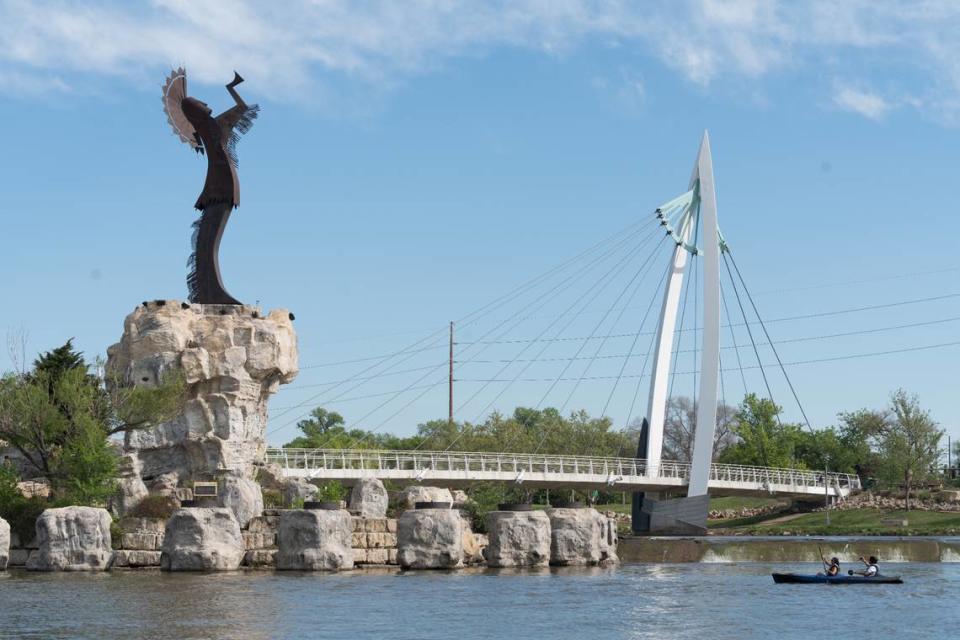
His widow, current Wichita school board member Hazel Stabler, said the Keeper site is significant not only to Native people but to all Wichitans and those familiar with the city — such as Wichita’s sister cities that have been given smaller Keeper replicas.
When visitors come to the city, Stabler said, “It’s one of the first places to go.”
The Keeper has become a communal spot, especially since it became more prominent with a $28 million riverfront beautification project in 2006. Now, set between two pedestrian bridges, the 44-foot Keeper is on a rocky promontory 30 feet higher than it was, surrounded by fire pits that are lit during the evening.
“It’s a spiritual, calming feeling to know he is there,” Stabler said. “It’s almost like he’s watching over everybody.”
Priscilla Zadoka of the Wichita and Affiliated Tribes agreed.
“It represents that somebody’s always watching over us and protecting us and giving us something to look up to as a reminder of who we are.”
‘What Wichita is’
Like Victors, Susan Seal remembers when Bosin first drew the Keeper.
Seal, a member of the Kiowa and Comanche Tribes, started working for her uncle while she was in high school in the early 1960s.
“He knew that he wanted something that would stand out, something that would mark what Wichita is.”
Through the decade or so that she worked for him, Seal had to keep track of Bosin’s scribbles — whether it was a drawing on a torn, tiny piece of paper or a number or message he jotted in a haphazard way.
“I could not throw away a sheet of paper because he just drew on everything. That was practically my whole job.”
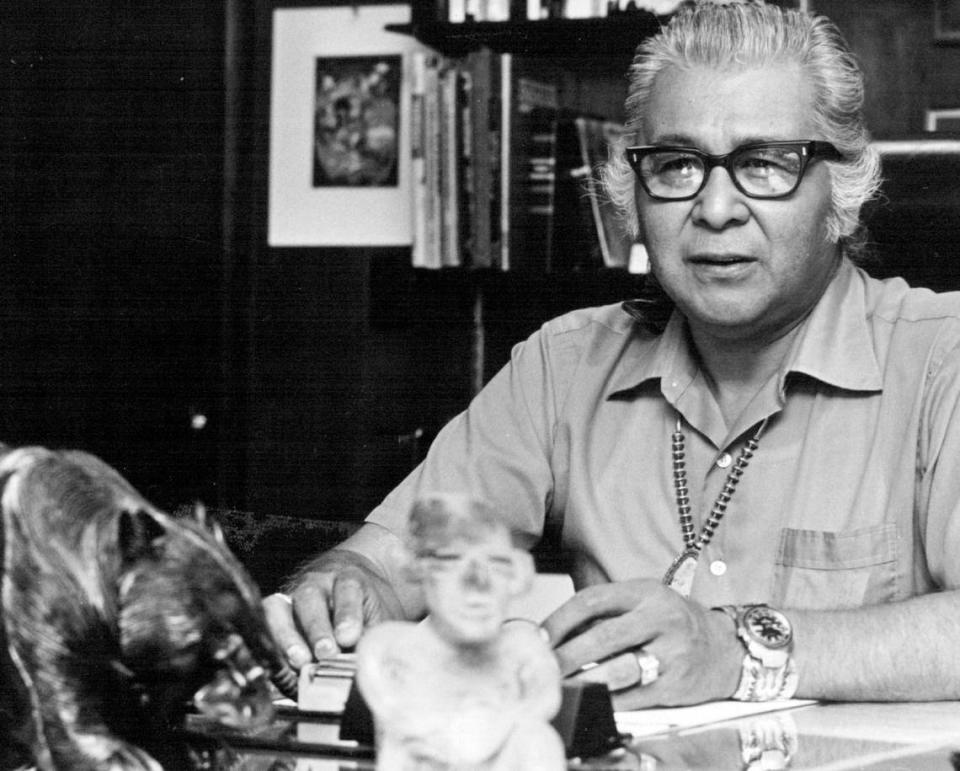
At first, she noticed what seemed like a cartoon Bosin kept drawing. Then it seemed to get more serious, and she saw almost a couple dozen different stances for what became the Keeper.
In a 1974 story, Bosin told The Wichita Eagle he experimented with a number of ideas, including feathers, tipis, grasses and spear shafts.
Bosin credited the idea for a sculpture to Elmer Hall, a vice president of Kansas Gas and Electric (now Evergy), who wanted a tribute to the area’s original inhabitants. He also told the publication it was Hall who envisioned the river fork site, which KG&E owned, with a towering statue over it.
Though he wanted a 60-foot statue, Bosin had to settle for the 44 feet that engineers told him it should be.
Calling himself an instrument in the process, Bosin said he passed along his drawings to the people who actually built the statue — KG&E senior engineer Martin Callstrom, draftsman Gary Snider and Tom Washburn of Architectural Metal Productions.
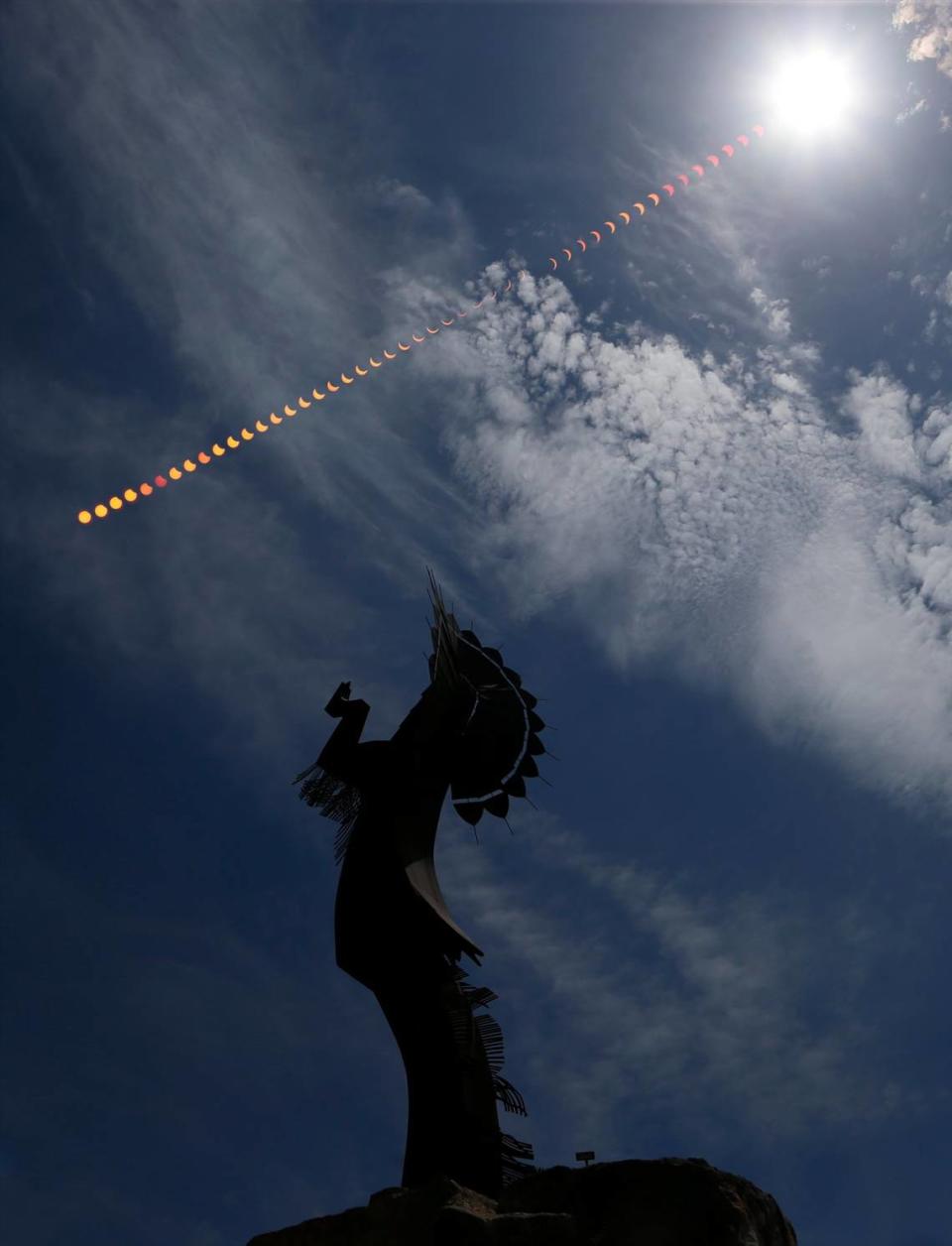
Bosin said he purposely stepped back after handing over his drawings.
“I really fought the urge to watch them during the actual construction because I thought I would add some sort of (dissension).”
A feeling to convey
There were others who helped with the Keeper, such as a pipe organ expert who explained to Bosin why his idea for tubular steel on the statue’s headdress feathers wouldn’t create the sound in the wind he was seeking, although Bosin said he regretted not insisting on it.
Bosin told The Eagle his fellow Native Americans influenced him as well when they shared stories of bathing and dancing at the river.
“The figure was born before the name was born, but the name was lingering in the depths of my mind,” he said.
“There was a feeling I wanted to convey, and of course the choice of location had a lot to do with it.”
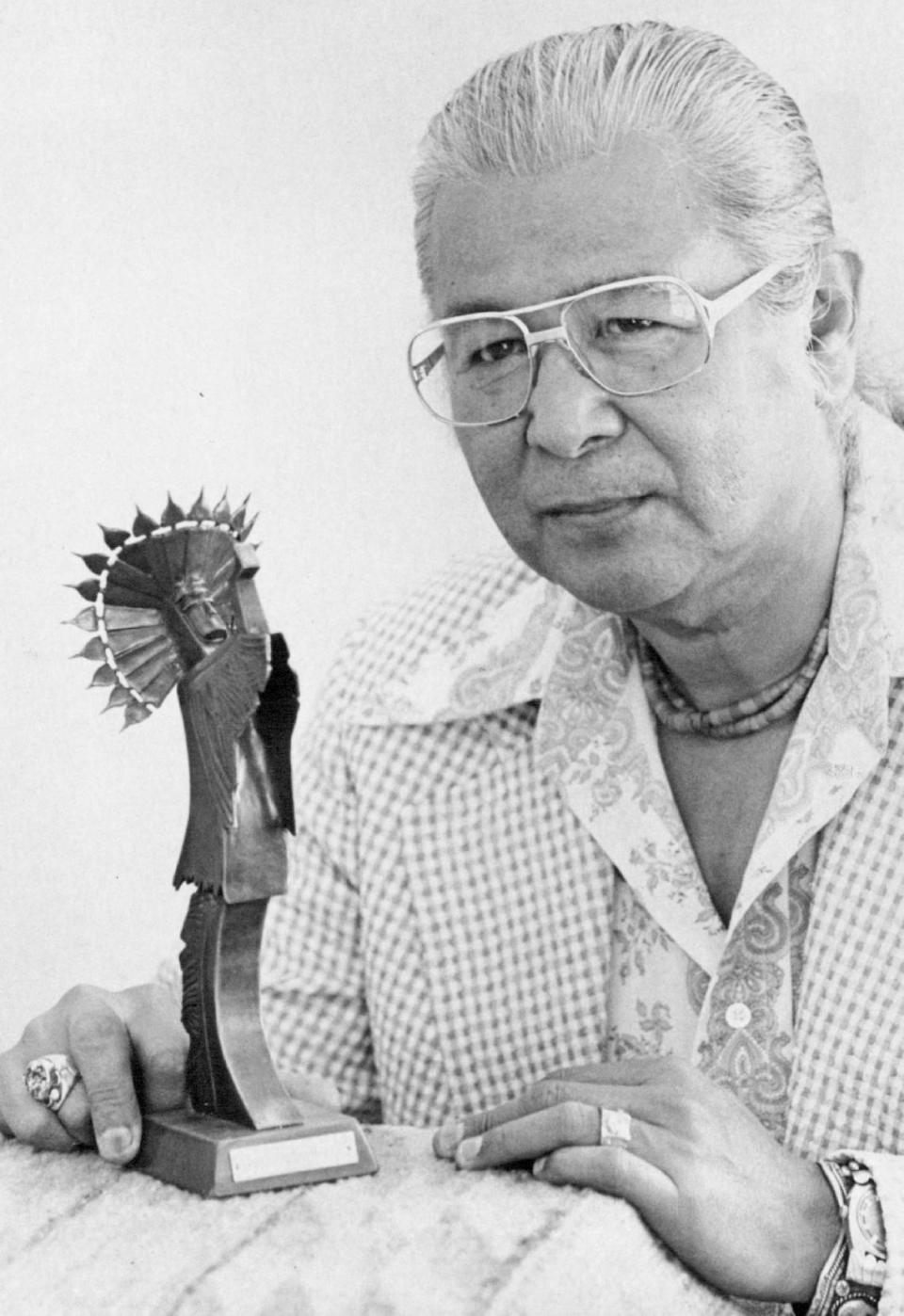
Bosin was not born in Wichita, but he called it “the birthplace of my fathers and forefathers.”
He said he had pride and emotional attachment to the Keeper, which is why he didn’t request payment for it.
“All living creatures are the Indians’ brothers. The Indian lived in complete accord with nature. Everything around him was holy. All Indians feel this. And the sculpture was a way of appealing to all people with that message.”
‘Recognition of the people’
Wichitan Augie Blanchat has been photographing the Keeper since it was in its original position, which was among some dirt, rocks and unkempt brush.
He likes the “recognition of the people who were here way before us Europeans showed up.”
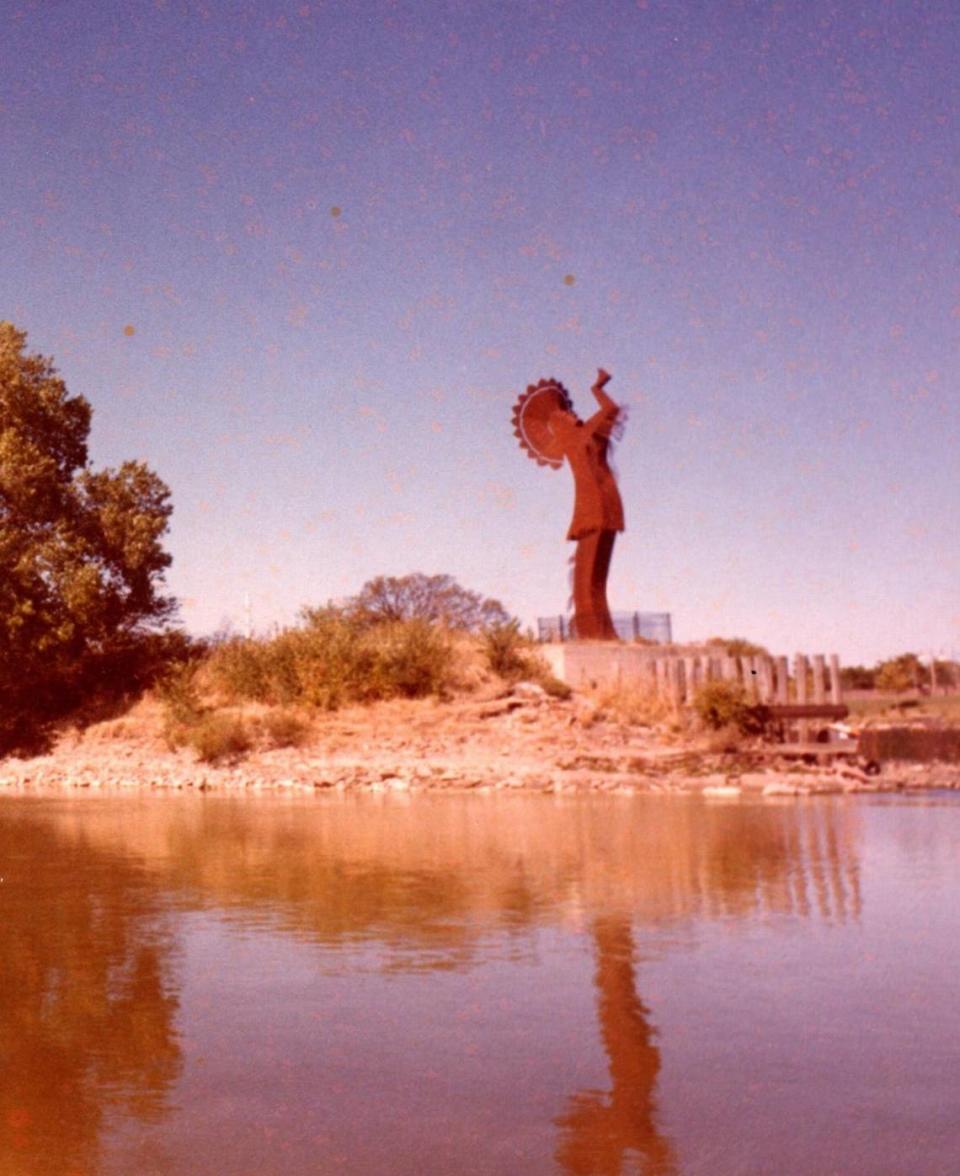
Blanchat said he feels a power to the Keeper. He described “a magnetism . . . even magic” to the site.
“The whole thing makes a lot of sense to me.”
When the Keeper was taken down and renovated during the 2006 project, Blanchat said he was uncomfortable with it gone.
“It was bothersome to me because it was . . . a unifying thing on a much bigger order than any kind of flag or any kind of banner than I had ever seen.”
Blanchat said he’s never spoken anything like this about the Keeper out loud before.
“It means a lot to me. Maybe more than I realized.”
‘Home to me’
For more than three decades, Lynn Rogers had an office across from the river where he had a great view of the Keeper.
“It’s always held a special place.”
The former lieutenant governor and state treasurer had a Keeper replica on his desk at the Kansas Statehouse, and he said when people saw it, “They knew it meant Wichita.”
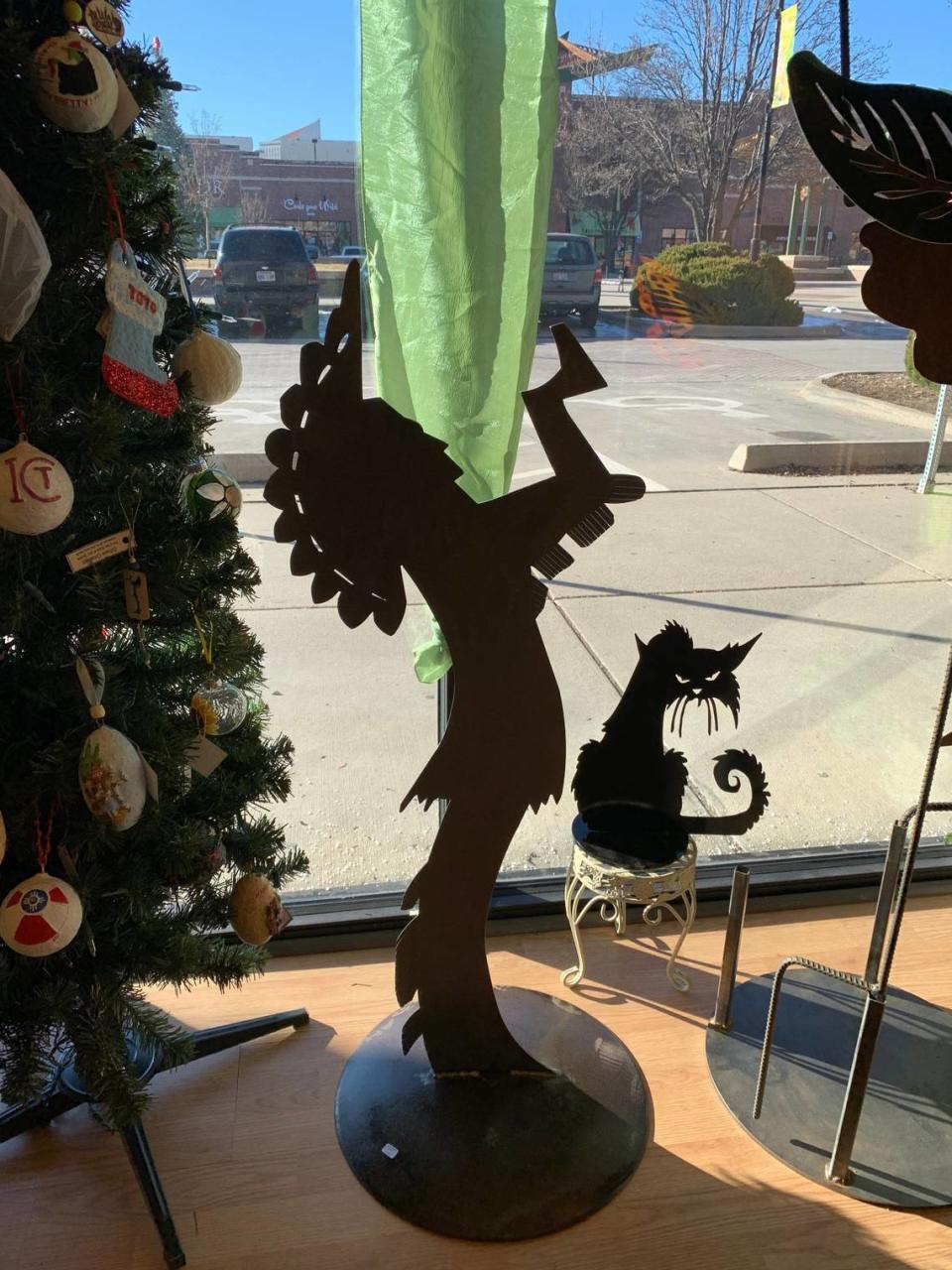
Maize resident Cecilia Green said she didn’t think about the Keeper much until she moved from Kansas.
Then, she said, “It just always kind of typified Wichita or home to me.”
She was living in Chicago during the 9-11 attack, and her three children each were in separate cities. They began discussing what would happen if all communications went out or there was an all-out war.
“Where can we go that feels safe?”
Green said they concluded, “We would all make our way to the Keeper.”
She told that story to a Wall Street Journal reporter in the weeks after the attack, and that’s how the Keeper wound up on the newspaper’s front page.
“It’s just an unusual statue and so full of meaning, not just to the Natives but to anyone who has been there, especially in the evening when they light the fire pots. It’s just an awesome sight.”
When her son died two years ago, Green scattered some of his ashes at the Keeper “so Michael would be there with us if we went there.”
Green said part of the reason the Keeper feels like a safe spot to so many is the old Indian legend that tornadoes won’t strike between two rivers or where they meet.
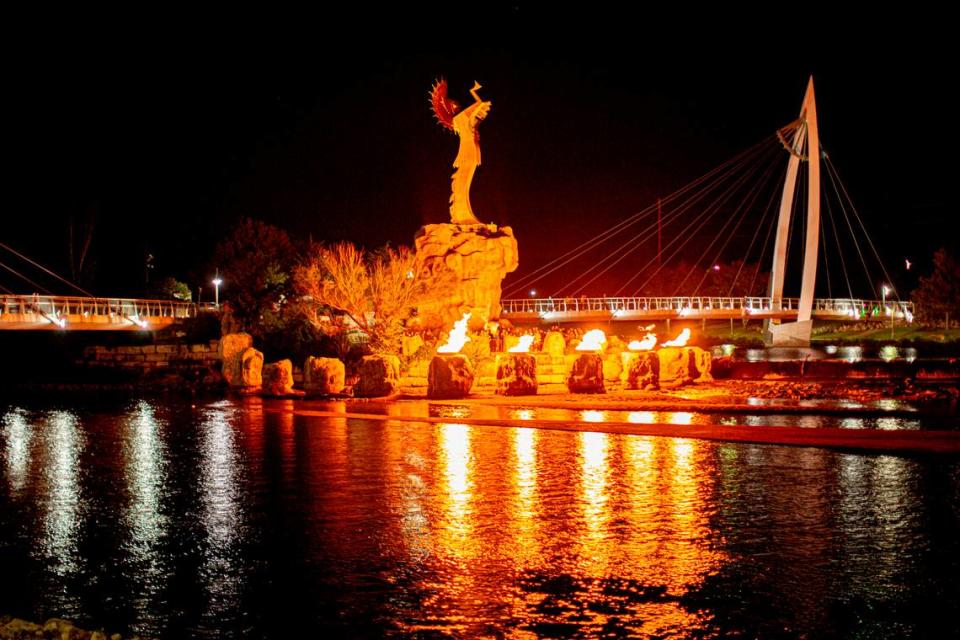
In fact, when expected tornadoes didn’t materialize in Wichita on Monday, a meme quickly circulated showing the Keeper as a train, knocking the weather — depicted as a bus — off the tracks.
All around Wichita, there are Keeper of the Plains statues: some big, some miniature, some colorful, some plain.
The image is copyrighted. The Bosin family has approved some versions of the Keeper, such as colorful fiberglass ones for a Keepers on Parade project, and asked others to stop selling some versions.
Green said the amount of Keeper replicas likely is “how it has really spread into so many of our consciousnesses.”
Tchotchke trouble
Barbara Bushyhead Harshberger, a member of the Cherokee and Sac and Fox tribes, feels conflicted when it comes to the Keeper’s popularity.
“Everybody has come to call it their own.”
That’s a good thing, she said.
“It means peace. Peace for everybody to believe in it and seize it.”
However, she was taken aback when the Keeper turned into tchotchkes.
Her initial thought was “they were derogatory against our prayerful Keeper.”
Eventually, Harshberger got used to it and decided a replica was all right “as long as it was tasteful.”
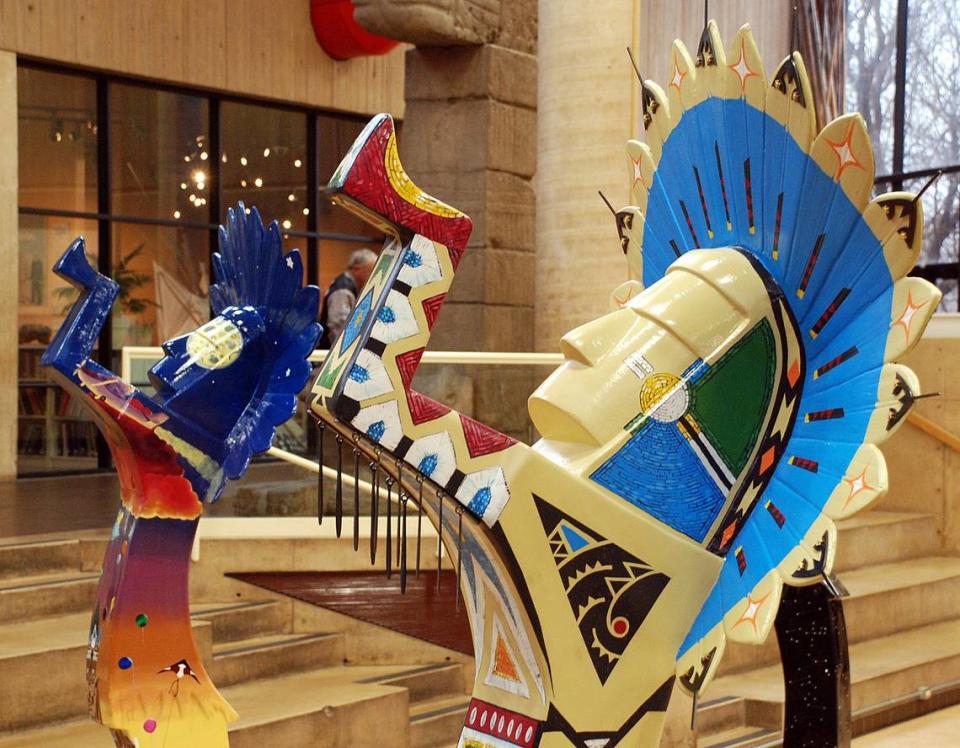
Chuck Rivas of the Chickasaw tribe has lived in Wichita on and off for about the same amount of time as the Keeper. His family knew Bosin, and he said his people view the sculpture as sacred, and that’s why he has an issue with many of the replicas around Wichita.
Some may be pretty, he said, but Keepers with flowers, telephone poles or sunglasses painted on them are offensive. Rivas compared it to drawing similar things on replicas of the Sistine Chapel or St. Peter’s Basilica.
“That’s what they’ve done to these.”
He said he’s heard that one even says Keeper of the Stuff, “which is not what the Keeper stands for.”
‘How proud I am’
Unlike older Native Americans who were taught and often forced to hide their culture, younger generations have embraced their heritage and tried to make it a part of their daily lives. That’s why they often share their Indian names.
Hannah Ramahi, the Seals’ granddaughter, is both Kiowa and Comanche, and her Kiowa name is Baugh-La-Ma, which means the woman who gives. It was passed down from her great-grandmother, Betty Nixon, who helped start the Indian museum.
“That’s really where my roots are digging deep,” Ramahi said. “The Keeper is a prime part of my childhood and . . . how proud I am to be Native. That to me is a very, very sacred spot that I grew up in.”
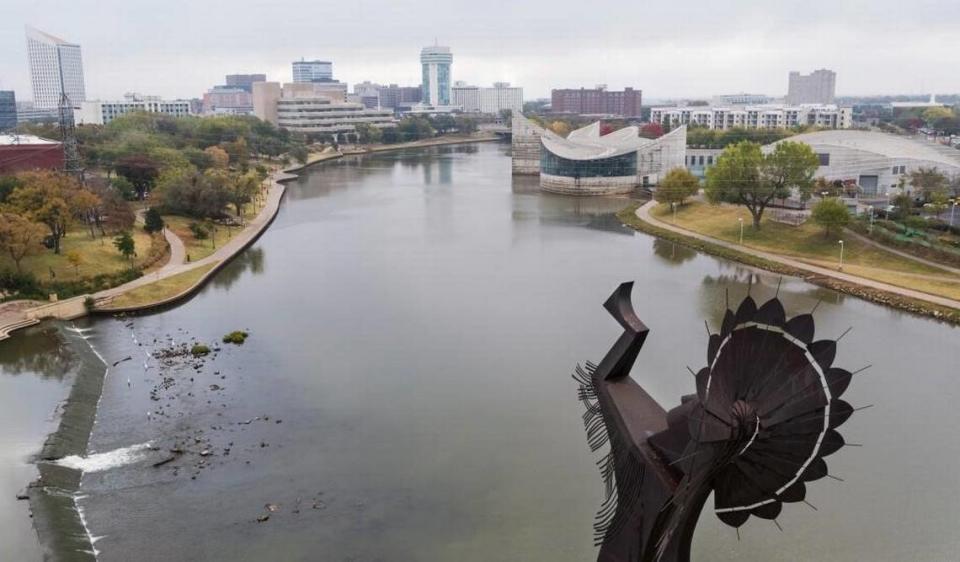
Susan Seal gets emotional when discussing Bosin, the Keeper and how she and her husband, Michael, married at the site in 1984. That was four years after Bosin died at age 59 from heart trouble and a gallbladder infection.
“My uncle was my — he was just everything.”
Seal said she thinks he would have been fine with how the area around the Keeper has been updated.
“He was very broadminded. . . . He would think first about the people of Wichita and that whatever is best . . . so be it. He was not one to look backwards. He was always forward.”
Seal said her uncle and mother both inspired her to become an ethnologist and educate people on who Natives actually are versus their stereotypes.
Through myriad ways, she said Bosin helped advance the perception and appreciation of Native culture in the city, particularly through the Keeper.
“I know that he couldn’t have done anything better for the Native people than what he did.”
